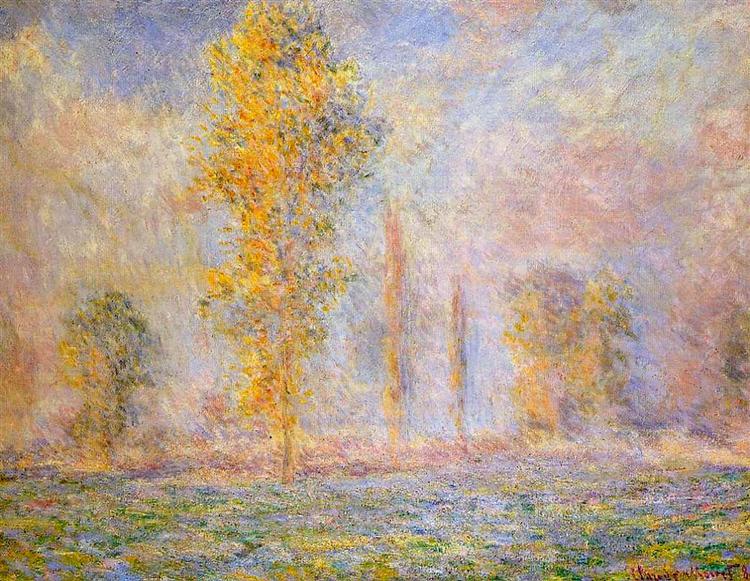Description
Claude Monet's painting "Meadow at Giverny" (1888) captures the vibrant, luminous essence of the French landscape, a recurring theme in the artist's work. This painting, like many of his works, reflects Monet's fascination with nature and his ability to translate light and color into a dynamic visual experience. Giverny, his home for many years, was an inexhaustible source of inspiration for Monet, and in this work we can see how he manages, through his distinctive technique, to depict life in the countryside, imbuing it with an almost ethereal sense.
The composition of “Meadow at Giverny” is a perfect example of Monet’s approach to capturing the moment. The landscape is divided into layers, with each section converging into a naturalistic shot of the countryside. In the foreground, fields of tall grass sway gently in the wind, rendered in shades of greens and yellows that give the impression of movement and light. The choice of colors suggests a sunny day, with an ethereal atmosphere emphasizing the effect of light on the foliage. These elements combine to create a mood of serenity and calm, hallmarks of Impressionism.
As the viewer's eye travels across the work, one cannot help but notice the loose and rapid application of paint, a technique that Monet mastered and is recognizable in his style. The visible brush strokes and use of complementary colors give the painting an almost three-dimensional quality. This approach not only challenges the conventions of traditional painting, but also invites the viewer to experience the landscape in a more visceral way. Monet seeks to capture the visual perception of the environment rather than its detailed representation, which provides an affective experience of the landscape.
Although it does not feature human figures, the work evokes an intimate connection with nature that seems to suggest human presence through the representation of the environment we inhabit. Monet often included figures in his landscapes, but in this work he chooses to let the landscape speak for itself, thus emphasizing the relationship between humans and the natural spaces we inhabit. The lack of figures could be interpreted as an invitation to reflect on the place of humans within this natural setting.
From a technical perspective, "Meadow at Giverny" exemplifies Monet's evolution towards bolder and more expressive styles that mark his David and previous works, where the fusion of color and light becomes the protagonist. This work, along with others in the Giverny series, shows his constant exploration of the impressionist gaze, which he increasingly perfects by seeking the immediacy of the captured moment.
The significance of this work lies not only in its aesthetic beauty, but also in its representation of the spirit of Impressionism, a movement that challenged the artistic norms of its time. Monet became a pioneer by transforming the landscape into a field of experimentation where the effects of light and color were the raw material of the visual experience. The "Meadow at Giverny" is, therefore, a clear example of his legacy and a manifestation of his deep connection with the environment. Through this painting, Monet allows nature to express itself and, in doing so, leaves us with a renewed appreciation of the beauty that surrounds us.
KUADROS ©, a famous painting on your wall.
Hand-made oil painting reproductions, with the quality of professional artists and the distinctive seal of KUADROS ©.
Painting reproduction service with satisfaction guarantee. If you are not completely satisfied with the replica of your painting, we will refund 100% of your money.

